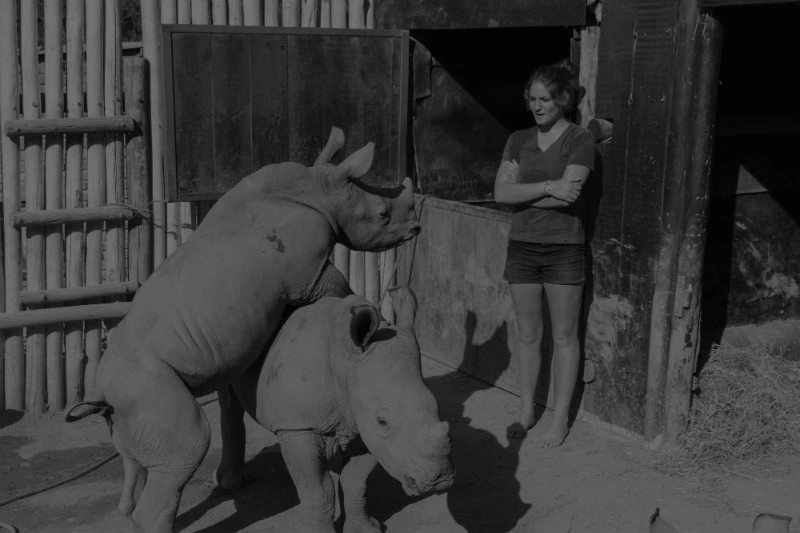Caracal caracal – The Kalahari’s Agile and Elusive Hunter
A Little Known Cat
Caracals, with their striking ear tufts and sleek bodies, are captivating wild cats found across Africa, the Middle East, and parts of Asia. Known for their agility and exceptional leaping abilities, they’re formidable predators. Let’s dive into the fascinating world of these remarkable felines!
Quickfire Caracal Facts:
- Weight: Males weigh between 7.2kg and 19 kg (16 lb and 42 lb) while females weight between 7 kg and 15.9 kg (15 lb and 35 lb)
- Speed: They are fast runners and can reach speeds of up to 80km/h (50 mph) per hour.
- Diet: These cats are carnivores, and their diet consists mainly of small mammals, birds, and reptiles. They are known to hunt for hares, young antelope, birds, and even young baboons. They are also known to scavenge when food is scarce, and are capable of killing small livestock.
- Behavior and Social Structure: They are solitary animals, except for during the mating season or a female with her young. They are active mostly during the night and early morning (sub 20C temperatures), and spend the rest of the day resting in dens or burrows. They are territorial animals and mark their territory with urine and feces.
- Reproduction: They breed once a year, usually between January and April. Gestation period is around 70-80 days. Litters typically consist of 1-6 kittens. Young are born blind and are dependent on their mother for the first few months of their lives.
- Threats: Habitat loss due to human development and agriculture is the biggest threat to these incredible animals. They are also hunted for their fur and are considered a pest by some farmers, as they may prey on domestic poultry. Disease, such as mange, can also be a problem for caracal populations.
- Conservation Status: They are listed as least concern by the International Union for Conservation of Nature (IUCN). However, their population is decreasing in some areas due to habitat loss, hunting and trade of their parts. They are also captured and kept as pets in some cultures and countries.

Taxonomy and Origins: Meet the Desert Lynx (That Isn’t a Lynx)
Caracals belong to the Felidae family and share a common ancestor with servals and African golden cats. Despite their nickname “desert lynx,” they are not closely related to true lynx species within the genus Lynx. Fossil evidence suggests Caracals have roamed their range for a significant portion of feline evolutionary history.
Size and Appearance: Built for Speed and Agility
Caracals are medium-sized cats, generally weighing 8-19 kg (18-42 lbs), with males slightly larger than females. They stand around 40-50 cm (16-20 inches) tall at the shoulder and have a distinctive build. Their most striking features are their elongated ears, tipped with long, black tufts of hair, and their uniform reddish-gold fur.
Adaptations for Success: From Climbing to Hunting
Caracals have numerous adaptations that make them skilled hunters in various habitats. Their powerful hind legs allow them to jump up to 3 meters (10 feet) vertically, enabling them to snatch birds in flight! They are incredibly agile climbers, seeking refuge in trees or ambushing prey from above. Keen eyesight and hearing aid in locating prey.
Caracal Behavior: Solitary Survivors
Caracals are primarily solitary, except during mating season or when females are raising kittens. These nocturnal hunters patrol their territories, marking them with urine and scent gland secretions. While mostly terrestrial, their climbing abilities offer both safety and hunting advantages.
Temperament: Wild and Wary
Caracals are naturally shy and elusive, avoiding human contact. However, they can be fiercely defensive if cornered or protecting their young. While sometimes kept as exotic pets in certain areas, it’s important to remember that they have specialized needs and are best left in the wild.
Reproduction: Raising the Next Generation of Hunters
Caracals typically breed once a year, with a gestation period of 70-80 days. Females give birth to small litters of 1-6 kittens in sheltered dens. Kittens stay with their mothers for several months, learning vital survival skills before becoming independent around one year of age.
Distribution: Wide-Ranging, but Fragmented
Historically, Caracals had a broader range across much of Africa, the Middle East, and parts of Central Asia. Today, their populations are fragmented, with the Kalahari Desert being a key habitat. They inhabit grasslands, savannas, woodlands, and semi-arid regions, showcasing their adaptability.
The Kalahari Connection: A Caracal Haven
The Kalahari landscape, though seemingly harsh, provides ample prey for Caracals. They hunt a variety of animals, from rodents and birds to small antelope like duiker or springbok. Their opportunistic diet helps them thrive in this challenging environment.

Threats and Conservation: A Vulnerable Predator
Caracals face numerous threats. Habitat loss due to agriculture and urbanization is a primary concern. They can also be targets for persecution by farmers who fear for their livestock, despite Caracals primarily focusing on smaller prey. Trade in their fur and the exotic pet trade pose additional challenges.
Your Attractive Heading
FAQs: Your Caracal Questions Answered
The Value of the Caracal: An Agile Ecosystem Engineer
Caracals play a vital role in ecosystems by controlling prey populations and maintaining balance. Understanding and appreciating these remarkable cats is essential for their protection. By championing their conservation, we ensure their captivating presence in the Kalahari and beyond for generations to come.
Want to see Caracals for yourself? Our Project let’s you join a Kalahari Safari to help African Wildlife or Contact Us for any other questions or read our Testimonials!
Learn more about these amazing cats here.



